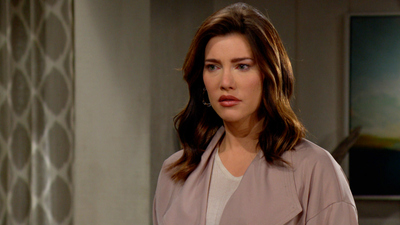Public sentiment fractured down the middle. Talk shows debated whether her act of shielding Stephie was born from redemption or self-interest. Old footage of her past manipulations resurfaced, painting her as a master of reinvention, while survivor testimonials hinted at a complex humanity few had cared to acknowledge before.
Meanwhile, Luna Nozzawa’s name lit up social feeds and headlines alike — from cries of outrage branding her unstable and dangerous, to sympathetic voices calling for mental health advocacy and deeper investigations into the emotional toll of high-society secrecy. Her lawyers filed motions citing psychological trauma, tracing a line of emotional neglect, betrayal, and manipulation that had crescendoed in a moment of uncontrollable panic.
As the DA’s office prepared charges, pressure mounted on Finn — now a reluctant guardian of too many truths. His statement, released to the press, walked a careful line: acknowledging the tragedy, pleading for empathy, and vowing to cooperate with investigators. He became a symbol of ethical turmoil, straddling a line between duty to justice and love for the family shattered by both gunfire and grief.
Within Forester Creations, silence became policy. Memos cited “respect for the deceased” and “ongoing investigations,” but insiders whispered of chaos behind closed doors. Production halted. Models sent home. Designs postponed. A legacy empire in creative paralysis.
At Spencer Publications, things moved swiftly. Bill Spencer, ever the predator in the power vacuum, launched “The Jackie Initiative” — a glossy campaign wrapped in tribute, but pulsing with strategy. He proposed a joint memorial issue between Spencer Weekly and Forrester’s media arm, citing “unity in grief,” though most understood it was an aggressive move to expand his editorial reach into fashion journalism. Ridge Forester initially resisted. But under pressure from shareholders and emotionally drained from days of hospital vigils, he agreed — temporarily.
Hope Logan emerged as an unlikely stabilizer, leveraging her family’s reputation and media presence to reframe the narrative. She spoke of healing, of institutional reform, of mental health and legacy. Quietly, she gathered support from both companies’ junior execs, laying the groundwork for a new kind of leadership — one not mired in vendettas, but driven by vision.
But beneath the surface, tensions brewed. Lawsuits loomed — wrongful death, corporate negligence, emotional damages. Investigations into past crimes resurfaced, forcing re-evaluations of Sheila’s parole, Spencer’s internal security, and even the true nature of the partnerships Jackie Romano had orchestrated in the shadows.
And Luna? She remained under psychiatric evaluation, her face shielded from cameras as lawyers argued for care over punishment. Some said she remembered everything. Others said she remembered nothing. Her fate would rest not just in court, but in a city grappling with the uncomfortable truth that power, pain, and prestige had collided under one roof in a way no PR firm could clean up.
The waves outside Forester Beach House still crashed, indifferent to the storm that had erupted within.
But for Los Angeles, the tide had shifted. And in its wake lay not just broken bodies and disrupted empires — but questions no one was ready to answer.